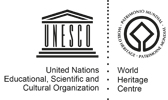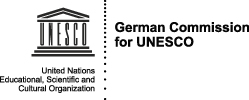24 New World Heritage Sites Inscribed
During its 39th session, the UNESCO World Heritage Committee inscribed 24 new sites on UNESCO’s World Heritage List. The new inscriptions include the Champagne Hillsides, Houses and Cellars, France, the Forth Bridge in the United Kingdom and the Ancient City of Ephesus in Turkey. Jamaica and Singapore celebrated their first inscriptions on the World Heritage List. The Committee approved extensions to three sites. Including the new inscriptions, the World Heritage List now amounts to 1.031 sites in 163 countries. Among them are 802 cultural sites, 197 natural sites and 32 mixed, cultural and natural sites.
Speicherstadt and Kontorhaus District with Chilehaus was inscribed as Germany’s 40th World Heritage site. The Committee emphasised that the site exemplifies in a unique manner the effects of the rapid growth in international trade in the late 19th and early 20th centuries. The Speicherstadt was originally developed between 1885 and 1927 consisting of large warehouse blocks as well as a network of streets, canals and bridges. Together with the Kontorhaus District that consists of large office complexes in modern style brick stone architecture of the 1920s to the 1940s, the site meets the criteria of Outstanding Universal Value.
Dr Verena Metze-Mangold, President of the German Commission for UNESCO underlined: “The world’s largest coherent ensemble of warehouses represents in an exceptional way the maritime industrial architecture of historicism and modernism. I am very pleased that the World Heritage Committee today recognised this ensemble on a par with the Egyptian pyramids, Mont Saint-Michel, the Taj Mahal or the Inca City of Machu Picchu. Now it is our task to safeguard the site and make use of its potential for intercultural dialogue.”
The announcement of the Committee’s decision to inscribe the sites of the Meiji Industrial Revolution in Japan was a moving moment. At the session, Japan acknowledged for the first time that South Koreans were forced to work against their will in the industrial sites under harsh conditions in the 1940s. The Japanese government announced that it would ensure that this part of the history would also be presented to the public through adequate site interpretation. The ensemble of 23 industrial plants in 11 locations bears testimony to the rapid industrialisation of the country, which followed the model of industrialisation of western countries.
Further Information and Resources
Further information on the 24 new World Heritage sites
Pictures of the 24 new World Heritage sites
Videos of the 24 new World Heritage sites







